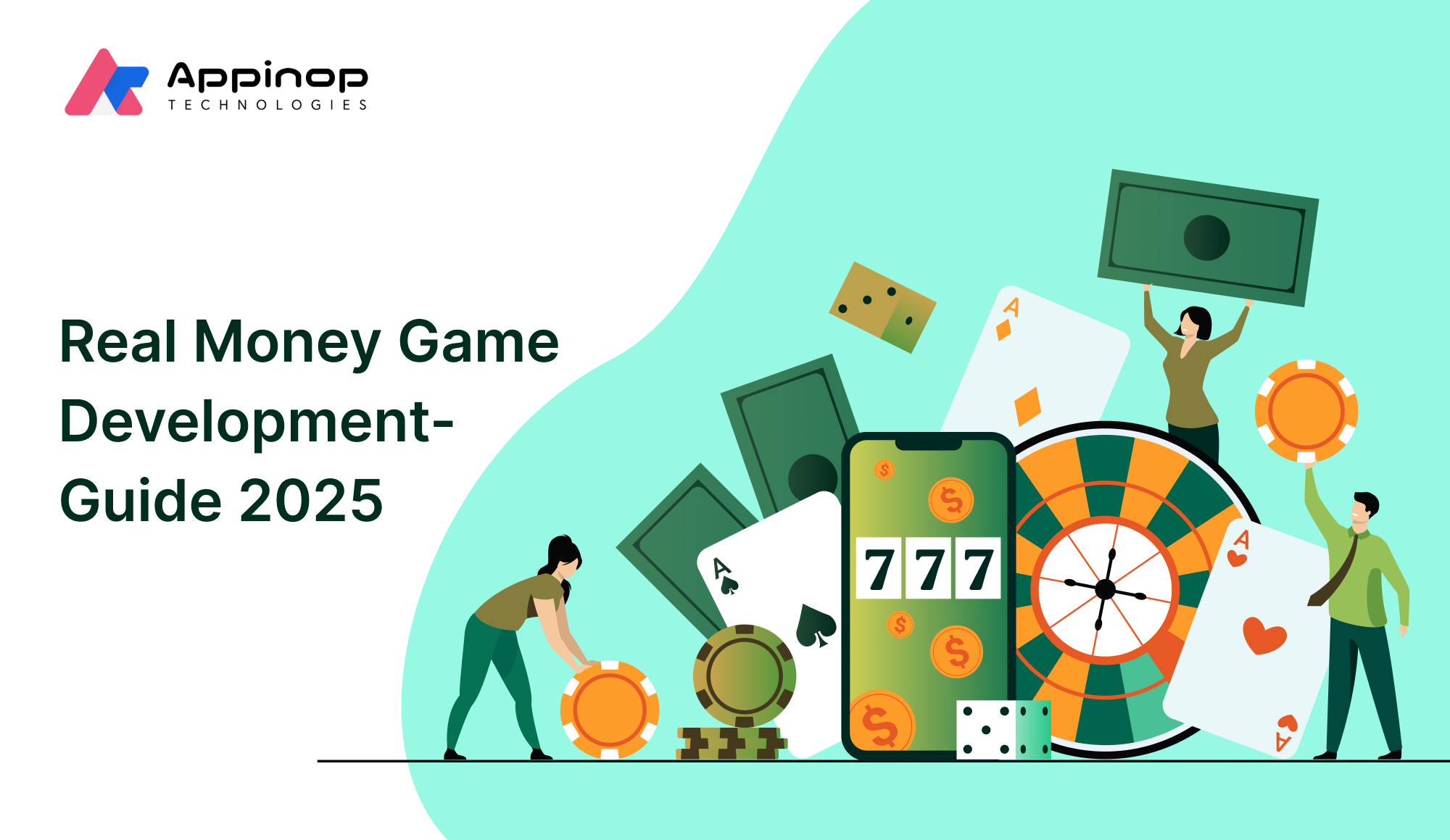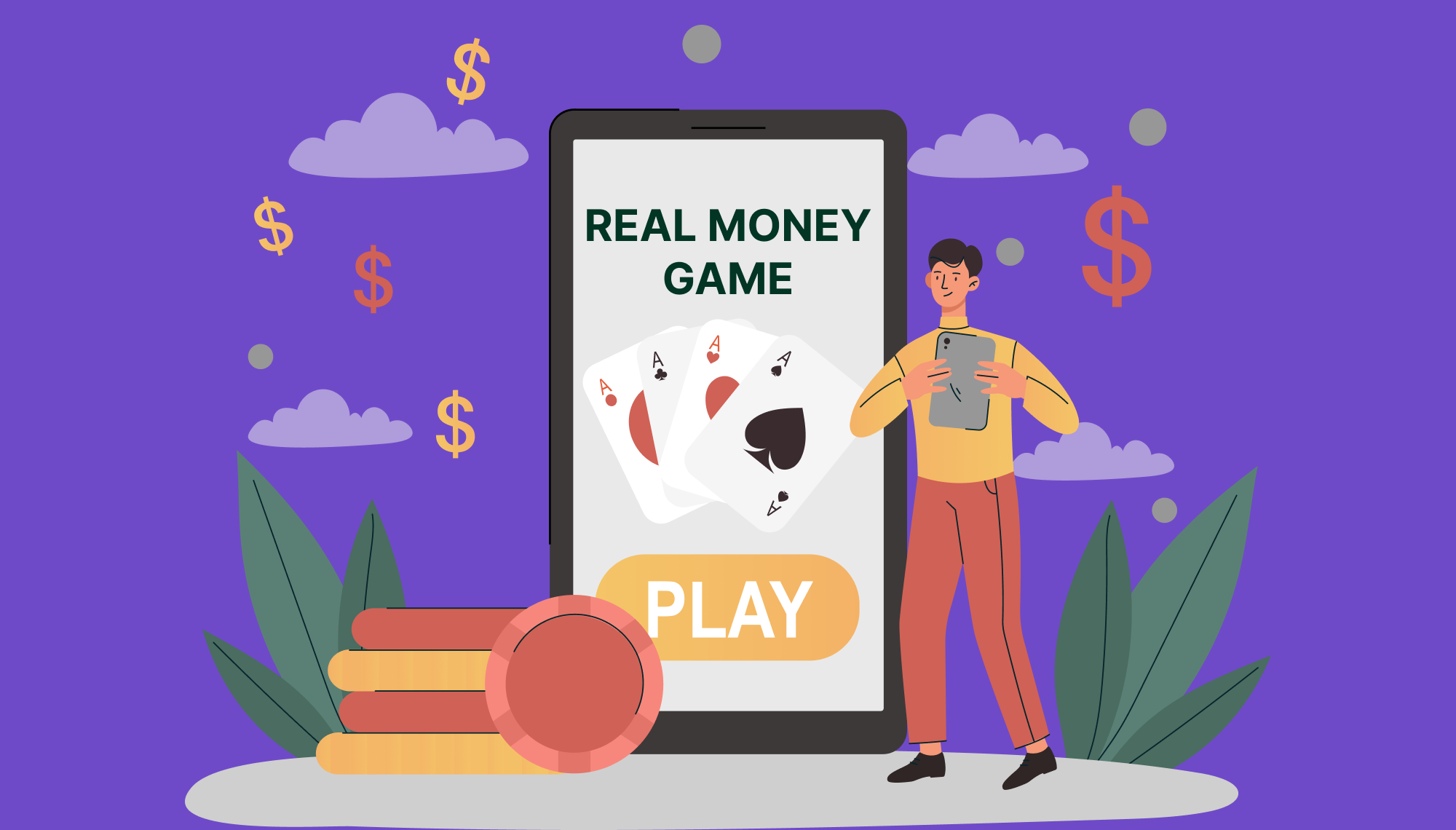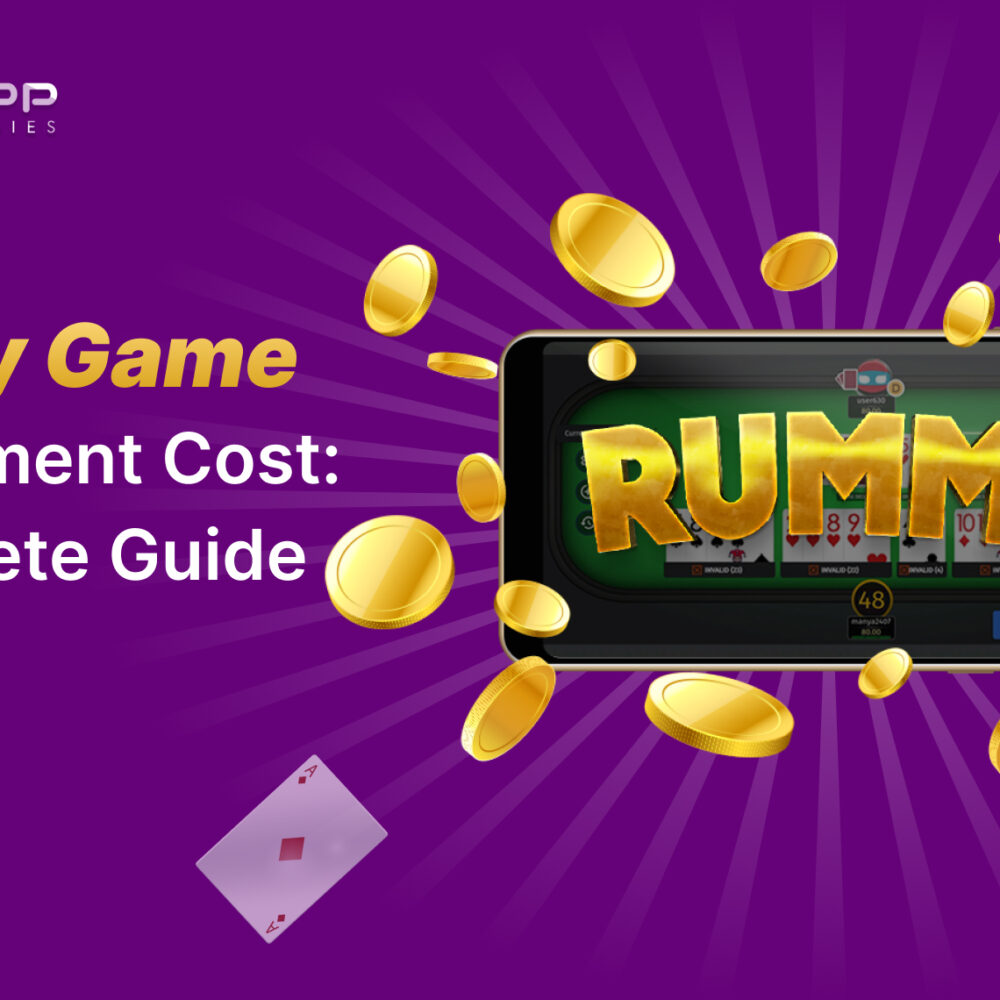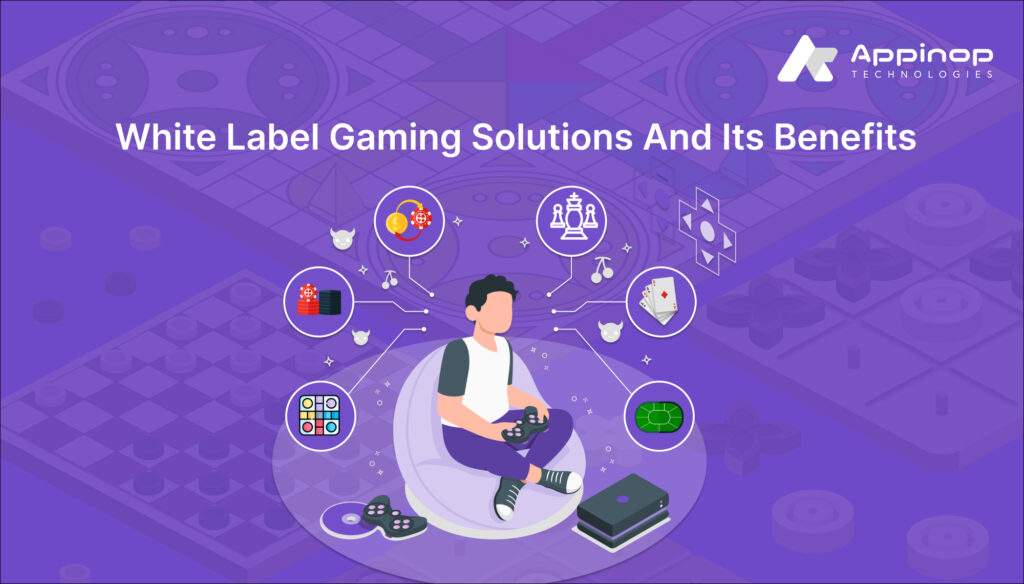
How to Succeed in Real Money Game Development- Guide 2025
The world of gaming has evolved significantly, with real money games (RMG) emerging as a lucrative segment for both developers and businesses. By offering players the opportunity to win real cash, these games have unlocked new levels of engagement and monetization. However, succeeding in real money game development requires more than just an innovative idea. It demands a thorough understanding of the industry, the ability to design captivating user experiences, and the technical know-how to ensure security and compliance.
As we approach 2025, the Real Money Game Development market continues to expand, driven by advancements in technology and increasing player demand. Whether you’re an aspiring developer or a business owner seeking to capitalize on this trend, building a successful real money game requires strategic planning and careful execution. This Blog will walk you through the essentials, from understanding the basics to budgeting, selecting the right technology, and ensuring player engagement. Let’s dive in and explore what it takes to excel in the competitive landscape of real money game development.
Understanding the Basics of Real Money Game Development

Real money games differ from traditional games as they involve monetary transactions. Players invest real money with the hope of earning rewards, making the stakes—and expectations—higher. Understanding these basics is critical for building a game that balances entertainment with trust and fairness.
Key Concepts
- Game Types: Real money games include casino games (poker, roulette), skill-based games (fantasy sports, card games), and hybrid models. Choose a niche based on your target audience and market trends.
- Monetization Models: These include entry fees, subscription-based models, and in-app purchases. Select a model that aligns with your game’s mechanics and target audience.
- Compliance and Legal Standards: RMGs are subject to strict regulations to ensure fair play and security. Understand regional laws and obtain necessary licenses before development begins.
Market Trends
The Real Money Game Development market is growing, thanks to mobile gaming and blockchain integration. Developers are leveraging technologies like smart contracts to enhance transparency and security. Staying informed about industry trends will give your game a competitive edge.
Essential Features for a Successful Real Money Game

Creating a successful real money game (RMG) requires integrating key features that enhance user experience, ensure security, and encourage player engagement. Here are the core elements that every RMG should have:
1. User-Friendly Interface
A simple, intuitive, and clean interface is vital for player retention. It should be easy to navigate, with a clear structure that allows players to find what they need quickly—whether it’s depositing funds, selecting games, or claiming rewards.
1. Design Simplicity: Keep menus minimalistic and instructions easy to follow.
2. Responsive Layout: The game must work seamlessly on mobile, tablet, and desktop.
2. Secure Payment Systems
Handling real money requires secure and reliable payment gateways. Provide players with multiple, well-known payment options (credit/debit cards, digital wallets, cryptocurrency) and ensure fast deposits and withdrawals.
1. Payment Methods: Include popular methods to cater to a wide audience.
2. Encryption: Implement SSL encryption for secure financial transactions.
3. Fairness and Transparency
Trust is essential in RMGs. Players need to be assured that the game outcomes are fair and not rigged. Use Random Number Generators (RNG) to ensure unpredictability and fairness in games of chance. Additionally, blockchain can increase transparency.
1. RNG for Games of Chance: Ensures unbiased outcomes in games like slots and poker.
2. Audit and Certification: Regular audits reassure players about game integrity.
4. Engaging Gameplay
Players want more than just a chance to win money—they want an engaging experience. Include features like achievements, multiplayer options, and daily challenges to keep the gameplay exciting and rewarding.
1. Rewards and Challenges: Players should feel motivated to return for regular rewards or new challenges.
2. Multiplayer and Leaderboards: Encourage competition through global rankings and tournaments.
5. Legal Compliance
Real money games must adhere to the legal regulations in the jurisdictions they operate. Ensure you have the necessary licenses and follow local gambling laws to operate legally and avoid penalties.
1. Licensing: Ensure your game is licensed in the relevant regions.
2. Responsible Gaming Features: Implement age verification, self-exclusion, and other tools to promote responsible play.
6. Customer Support
Effective customer support is essential for maintaining player satisfaction. Offering 24/7 support through various channels (live chat, email, and phone) helps resolve issues quickly and ensures players feel valued.
1. 24/7 Support: Players should always have access to assistance when needed.
2. FAQ and Resources: An easy-to-navigate help section for common issues helps players resolve problems independently.
Budgeting for Real Money Game Development: A Practical Guide

Budgeting is one of the most critical aspects of real money game development. With the high financial stakes involved, it’s essential to allocate resources efficiently across multiple areas to ensure both the game’s quality and profitability. A well-planned budget helps prevent unexpected costs and ensures that all necessary components, such as development, legal compliance, marketing, and server infrastructure, are adequately funded.
The process of budgeting can be complex, but breaking it down into key categories will help you focus on the areas that demand the most attention. Here’s a detailed look at the primary cost factors and tips for keeping your budget in check.
Key Cost Factors in Real Money Game Development
- Game Design and Development
- Design Costs: This includes game design, UI/UX, and graphics development. It involves hiring skilled designers who can create visually appealing and user-friendly interfaces.
- Development Costs: These include payments for backend and frontend developers, along with their tools and frameworks. Hiring experienced developers ensures the game functions smoothly, especially with real-money transactions in place.
- Licensing and Legal Compliance
- Licensing Fees: Depending on the jurisdiction, you will need to obtain a license to operate real money gaming services legally. These costs vary by country and game type.
- Legal Consultation: You’ll also need a legal team to ensure your game complies with gambling laws, which can be intricate and vary from region to region.
- Infrastructure and Server Costs
- Hosting Fees: To handle real-time player interactions and monetary transactions, you’ll need secure, scalable server infrastructure. Popular options include Amazon Web Services (AWS) and Google Cloud, which charge based on usage.
- Security Infrastructure: Investing in secure payment gateways, data encryption, and anti-fraud systems is crucial to protect both player data and financial transactions.
- Marketing and User Acquisition
- Pre-launch Marketing: Budgeting for a robust pre-launch marketing campaign is essential for building anticipation. This includes costs for social media ads, influencer marketing, and SEO optimization.
- Post-launch Marketing: Ongoing marketing efforts to retain players and attract new ones, such as referral programs, ads, and promotions, should also be factored in.
- Operations and Maintenance
- Ongoing Updates and Support: After launch, regular updates and bug fixes are necessary to keep the game functional and appealing. This also includes customer support teams to address player queries and complaints.
- Community Management: Building and maintaining a community around your game helps retain players. Community managers can help foster engagement on social platforms, forums, and in-game chat rooms.
Budget Breakdown Table
To simplify, here is a sample budget breakdown for the development of a real money game. This is an estimated allocation of costs based on the major components involved in the process.
| Category | Estimated Percentage of Total Budget | Description |
| Game Design and Development | 30% | Covers game design, UI/UX, development, and backend architecture. |
| Licensing and Legal Compliance | 10% | Includes licensing fees, legal consultation, and compliance checks. |
| Infrastructure (Hosting/Servers) | 15% | Server costs, cloud hosting, and security infrastructure. |
| Marketing and Promotion | 20% | Pre-launch campaigns, social media ads, influencer partnerships. |
| Ongoing Operations and Support | 10% | Maintenance, customer support, and community management. |
| Contingency Fund | 5% | For unexpected costs or scope changes during development. |
| Profit Margin | 10% | To ensure the business remains financially viable post-launch. |
Choosing the Right Technology and Tools on a Budget

The right technology stack can make or break your game. While top-tier tools are often expensive, there are budget-friendly options that don’t compromise on quality.
1. Key Technologies
1. Game Engines: Unity and Unreal Engine offer robust features and scalability.
2. Blockchain: Ideal for transparency and secure transactions in RMGs. Consider platforms like Ethereum or Polygon.
3. Payment Integration Tools: Razorpay, Stripe, or PayPal for secure and diverse payment options.
2. Budget-Friendly Strategies
1. Opt for free game engines like Godot if starting small.
2. Use cloud-based hosting solutions like AWS for scalability without high upfront costs.
3. Invest in modular tools that allow gradual feature addition as your game grows.
Maximizing Player Engagement and Revenue Potential

To succeed in real money game development, it’s crucial to focus on both engaging players and maximizing revenue. Here are key strategies to achieve this:
1. Personalization and Customization
Offer tailored experiences based on player behavior and preferences. Personalized rewards, dynamic difficulty adjustments, and character customization enhance player satisfaction, leading to higher engagement and in-game purchases.
2. Regular Updates and New Features
Introduce fresh content regularly, such as new game modes, seasonal events, and limited-time rewards. Frequent updates keep the game exciting and encourage players to return, boosting retention and long-term revenue.
3. Social Features and Community Engagement
Enable multiplayer modes, leaderboards, and in-game chat to foster competition and community interaction. Social features help build a loyal player base, leading to higher engagement and organic user acquisition through word-of-mouth.
4. Loyalty and VIP Programs
Reward your most dedicated players with loyalty perks, exclusive bonuses, and VIP access. These programs increase player retention and incentivize players to spend more, enhancing both user satisfaction and revenue.
5. In-Game Monetization Strategies
Implement in-app purchases, microtransactions, and tournament entry fees to generate consistent revenue. Balance these monetization strategies with a fair gameplay experience to avoid alienating players while maximizing earnings.
6. Data Analytics for Continuous Improvement
Utilize player data to optimize gameplay, retention strategies, and monetization. By analyzing player behavior and spending patterns, you can adjust the game to better meet their needs, ensuring sustained engagement and revenue growth.
Conclusion
Success in real money game development requires a balance of innovation, technical expertise, and strategic planning. By understanding the basics, integrating essential features, managing budgets, and focusing on player engagement, you can create a game that thrives in the competitive Real Money Game Development market. The industry’s growth potential in 2025 is immense—position yourself for success by leveraging this guide as your roadmap.
Helpful Insights From Google Developers
Read Full Blog Now! – A New Approach to Real-Money Games on Google Play
FAQs
Question 1: What are real money games?
Real money games involve players using actual money for gameplay, with the chance to win monetary rewards.
Question 2: Are real money games legal?
The legality of Real Money Game Development varies by region. Ensure you comply with local laws and obtain necessary licenses.
Question 3: What types of real money games are popular?
Some of the most popular real money games include:
- Ludo Game : A classic board game where players race their tokens around the board based on dice rolls. Many online versions now allow players to wager money on the outcome.
- Rummy Game : A card game that involves forming sets or runs of cards. Players can wager real money in online rummy games, making it a popular choice for card game enthusiasts.
- Poker Game : A well-known card game where players bet chips or money based on the strength of their hands. Online poker rooms offer real-money games with various stakes and formats.
- Fantasy Sports: Where players create virtual teams of real-life athletes and win money based on their team’s performance in actual games.
- Online Slots and Casino Games: Digital versions of traditional slot machines and casino games like blackjack, roulette, and baccarat, where players can wager real money.
Question 4: How much does it cost to develop a real money game?
Costs range from $50,000 to $200,000, depending on features, complexity, and development team.
Question 5: What technology is best for real money game development?
Unity and Unreal Engine are popular choices. Blockchain can also be used for enhanced transparency.
Question 6: How can I ensure my game is secure?
Use secure payment gateways, encryption, and regular audits to protect player data and transactions.
Appinop Technologies
We are a closely knitted bunch of thinkers, designers, developers and investors who are committed to transform the user experience by inventing and reinventing techniques that return high user engagement and increase share ability. Be it Android or iOS Mobile App or an Ecommerce portal, we strive to deliver only the best even if it takes repeated revisions.









